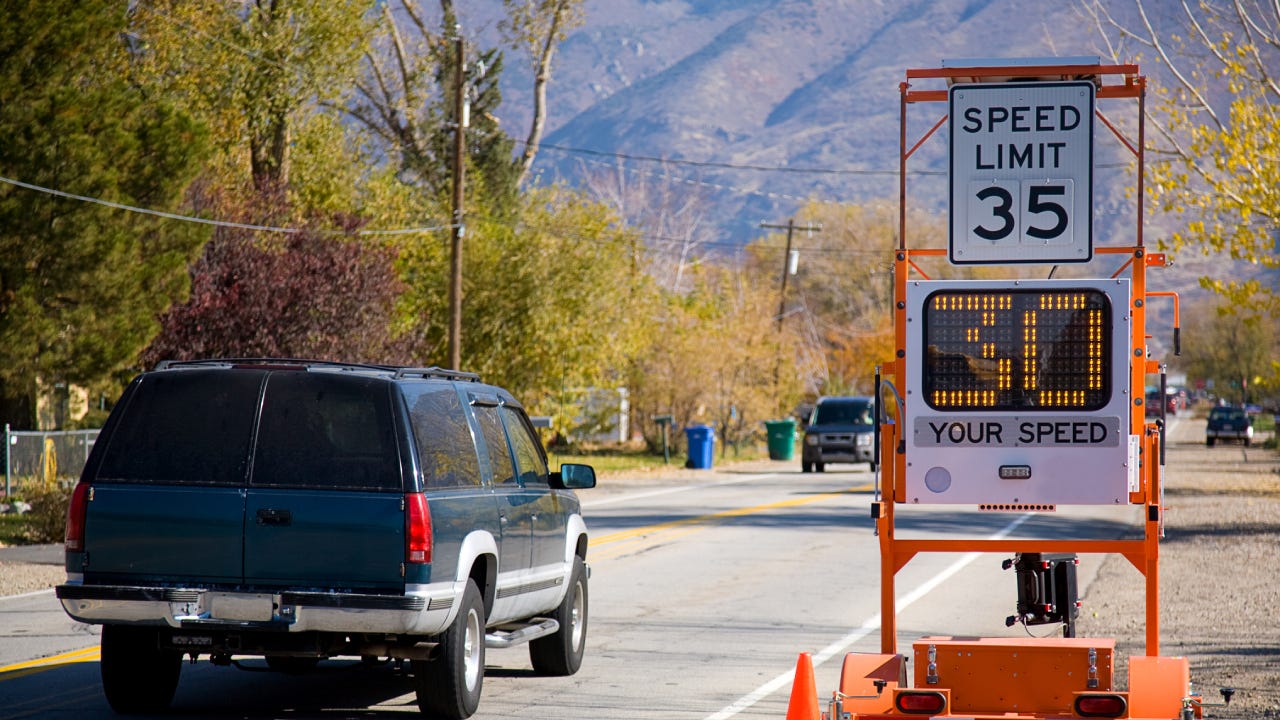How a speeding ticket impacts your insurance in Washington, D.C.

Drivers in Washington, D.C., already pay 11 percent more for full coverage car insurance than the national average. After a speeding ticket, their rate jumps even higher. A D.C. driver with a clean record pays an average of $2,719 per year for full coverage, but that climbs to $3,119 per year after a speeding ticket. Bankrate can help you understand how your insurance premium might change after getting a speeding ticket in Washington, D.C.
How much is a speeding ticket in Washington, D.C.?
The cost of Washington, D.C. speeding ticket fines is based on how many miles per hour (mph) you were going over the limit and where you were driving:
- 10 mph or less over the limit: $50
- 11 to 15 mph over the limit: $100
- 16 to 20 mph over the limit: $150
- 21 to 25 mph over the limit: $200
- Over 25 mph over the limit on controlled access roadways: $400
- Over 25 mph over the limit on non-controlled access roadways: $500
- Unreasonable speed in a school zone: $100
- Unreasonable speed near a playground, recreational facility, pool, athletic field or senior center: $100
In addition to fines, drivers also face the likelihood of higher auto insurance rates from even a single speeding ticket. The average cost of car insurance in D.C. for full coverage is $2,719 per year, and minimal coverage is $825 per year. After a speeding ticket, average rates jump to $3,119 and $945 per year, respectively.
The cheapest car insurance for Washington, D.C. drivers with a speeding ticket
Finding the cheapest car insurance in D.C. can be challenging after receiving a moving violation, but it is possible. When looking for lower rates, remember the other factors that matter to you in an insurance company. For example, do you prefer a carrier with robust digital options? Or, you may need an agent with a brick-and-mortar location. Sometimes, the best car insurance company for you isn’t always the one with the cheapest rate.
To simplify the search, below are the top five cheapest car insurance carriers in D.C. for drivers with speeding tickets.
| Company | Avg. full coverage rate before speeding ticket | Avg. full coverage rate after speeding ticket | % difference after speeding ticket |
|---|---|---|---|
| USAA | $1,107 | $1,296 | 17% |
| Geico | $1,645 | $1,875 | 14% |
| Erie | $1,801 | $1,890 | 5% |
| Progressive | $3,184 | $4,137 | 30% |
| State Farm | $3,764 | $4,460 | 18% |
What to do after a speeding ticket in Washington, D.C.
In Washington, D.C., drivers have up to 30 days to pay the fine or contest the ticket before a penalty applies. The timeline is as follows:
- Days 1-30: Pay the fine or contest the ticket
- Days 31-60: Pay the fine with a penalty or contest the ticket
- Day 61: Driver is deemed liable
- Day 61-120: Pay the fine with a penalty or file a motion to vacate
- Day 121: Fine assigned to collections
Driving history is a significant rating factor, and if you are concerned about the impact of a speeding ticket on your car insurance, there are steps you can take.
Contest the ticket
The first step is to contest the speeding ticket if you feel that it was issued in error. You can do this online or through the mail by completing an adjudication request. The form must be received within the 30-day timeline to avoid penalties. The hearing examiner will decide if the evidence you brought to court is enough to reduce or vacate the ticket or if you must pay the fine.
Look for discounts
If the speeding ticket impacts your policy, ask your agent which car insurance discounts you might qualify for. Many insurers offer discounts for enrolling in automatic payments, completing a defensive driving course and policy bundling.
Shop around
An expert-recommended method for finding lower rates is to request free quotes from several car insurance companies. Suppose you have several speeding tickets or other infractions on your record in the last few years. In that case, it may be wise to approach insurers specializing in coverage for high-risk drivers, too. Either way, specify the same coverage types and limits for each company so you can compare rates apples to apples.
Frequently asked questions
Methodology
Bankrate utilizes Quadrant Information Services to analyze November 2024 rates for ZIP codes and carriers in all 50 states and Washington, D.C. Rates are weighted based on the population density in each geographic region. Quoted rates are based on a 40-year-old male and female driver with a clean driving record, good credit and the following full coverage limits:
- $100,000 bodily injury liability per person
- $300,000 bodily injury liability per accident
- $50,000 property damage liability per accident
- $100,000 uninsured motorist bodily injury per person
- $300,000 uninsured motorist bodily injury per accident
- $500 collision deductible
- $500 comprehensive deductible
To determine minimum coverage limits, Bankrate used minimum coverage that meets each state’s requirements. Our base profile drivers own a 2022 Toyota Camry, commute five days a week and drive 12,000 miles annually.
These are sample rates and should only be used for comparative purposes.
Incidents: Rates were calculated by evaluating our base profile with the following incidents applied: clean record (base), single speeding ticket.
Gender: The following states do not use gender as a determining factor in calculating premiums: California, Hawaii, Massachusetts, Michigan, North Carolina, Pennsylvania.
Age: Rates were calculated by evaluating our base profile (40 years) applied. Age is not a contributing rating factor in Hawaii and Massachusetts due to state regulations.
You may also like

How to get out of an auto loan or lease

How the banking crisis could impact borrowers





